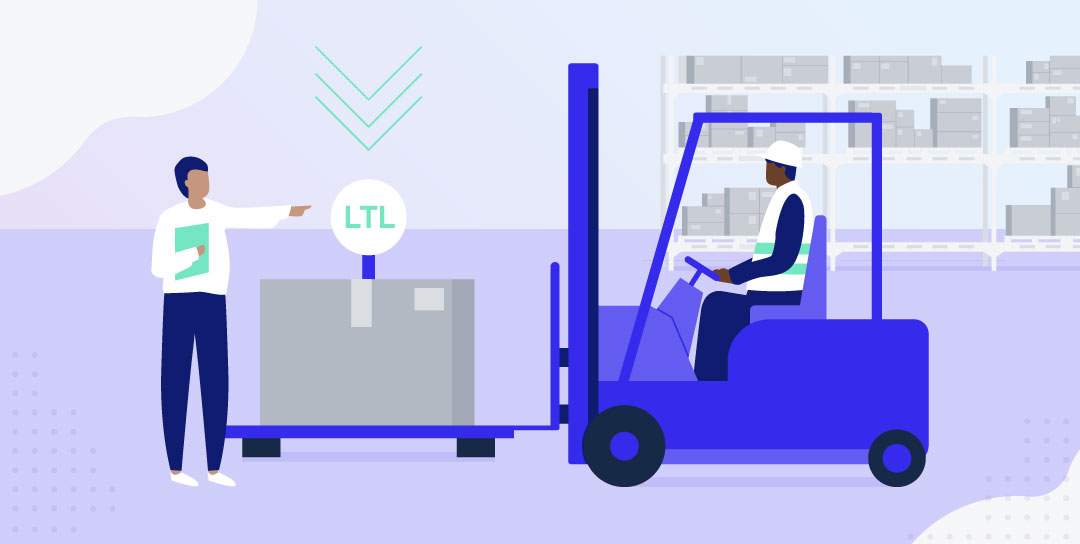
Not all ecommerce orders can be shipped as parcels. When items are particularly heavy (typically 150 pounds or more) or oddly shaped (like surfboards), they need to be shipped using less-than-truckload services — or LTL for short.
ShipEngine users now enjoy access to 27 different LTL carriers through their accounts. These new LTL integrations can help new and existing users add LTL shipping services to their fulfillment strategies, or combine their current LTL shipping activity with their parcel shipping through ShipEngine.
Here’s more information on the types of companies that need LTL services, plus how to get started with LTL shipping through ShipEngine.
Who Uses LTL Shipping Services?
Companies in a wide range of industries need LTL freight services to fulfill ecommerce orders. These companies are typically using both parcel shipping and LTL shipping because of the diversity of products they sell.
Some companies have enough freight volume to take up entire trucks. LTL shipping is a little different. Smaller operations don’t have enough shipments for a full truckload. Instead, they need something less than a full load, which is where LTL services provide value. When you ship LTL, your heavy and unusually shaped items share space on a truck with products from other businesses. Also, in some cases, ecommerce brands choose LTL services because they have several small items that can be placed on one pallet to take advantage of LTL rates.
Take the surfboard mentioned above as an example. A surf shop in California may sell surfboards online, which requires LTL shipping services. But the shop may also sell surfboard wax and wetsuits, which can be shipped via parcel services. So the surf shop needs both LTL shipping and parcel shipping.
The same is true of many big-box stores. A home living company may be able to ship flatware via parcel, but it will need LTL shipping for larger items like sofas and coffee tables. An electronics store may be able to ship noise-cancelling headphones by parcel, but it will need LTL shipping for its largest flatscreen televisions. A hardware store can use parcel services to ship paintbrushes or lightbulbs, but it will need an LTL shipping option to fulfill a lawnmower order.
How Does LTL Shipping Work?
LTL shipping through ShipEngine is similar to parcel shipping, with just a few key distinctions. Here’s the 5-step process:
- Get a Rate Quote: Just like with parcel shipping, ShipEngine users can shop for rates across all of our LTL carriers. The rates returned will include different LTL shipping costs, different services, and different delivery speeds/times. Users will have to create a decision-making process based on what’s most important: shipping cost, shipping speed, or a blend of the two.
- Schedule a Pickup: Once you choose the best carrier and LTL shipping service, you’ll schedule a pickup time.
- Pickup: At pickup, the shipper provides the driver with a bill of lading (BOL) that serves as a pickup receipt and as a definition of what’s being shipped. The freight and BOL are both marked with a number used for tracking.
- Transit: When LTL shipments are in transit, the shipment status gets updated each time the freight is handled or transferred along the route. These status updates are used for tracking.
- Delivery: Deliveries are typically made early in the day so that drivers can pick up more shipments later in the day. The recipient signs for and accepts the freight, noting any missing pieces or damage on the delivery receipt.
Visit the ShipEngine documentation to learn more about connecting your existing LTL carrier accounts or creating new ones. If you have any questions about LTL shipping through ShipEngine, or other aspects of our APIs, contact our sales team for support and guidance.
ShipEngine is launching its LTL shipping services through a group of 27 LTL carriers:
- A. Duie Pyle
- AAA Cooper Transportation
- ABF Freight Systems
- Averitt Express
- Central Freight Lines
- Central Transport
- Day & Ross
- Daylight Transport
- Dayton Freight Lines
- Dependable Highway Express
- Estes Express Lines
- FedEx Freight
- Forward Air
- Midwest Motor Express
- Oak Harbor Freight Lines
- Old Dominion Freight Lines
- Pitt-Ohio Freight
- R+L Carriers
- Roadrunner Transportation Services
- SAIA Motor Freight Lines
- SEKO Logistics*
- Southeastern Freight Lines
- Standard Forwarding
- UPS Freight
- Ward Trucking
- XPO Logistics
- YRC Freight
(* SEKO Logistics uses a workflow that is slightly different from the others on this list. The workflow is more similar to parcel shipping within ShipEngine.)
The majority of our LTL carriers offer quotes, pickups, tracking and shipment-related documents. Check our LTL carrier information table to see the capabilities you have access to through each carrier.
Are You Ready for LTL Shipping Through ShipEngine?
Existing ShipEngine users can start creating or connecting LTL carrier accounts to take advantage of these new less-than-truckload options. New ShipEngine users can also create an API key and start creating or connecting LTL carrier accounts.
Whether you’re a new or existing user, and no matter your shipping needs, you can always get in touch with the ShipEngine team for LTL support and for assistance with other issues. If you’re ready to start shipping LTL freight through ShipEngine, get in touch with us today.

Leave a Reply